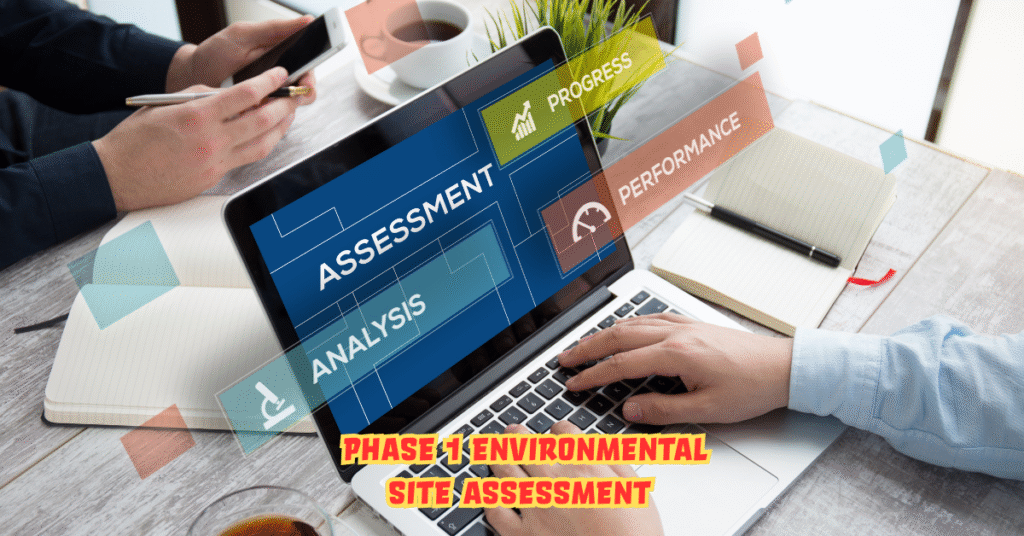When buying, selling, or refinancing a property, one of the most critical steps for responsible ownership and due diligence is the Phase 1 Environmental Site Assessment (ESA). This process is designed to identify potential or existing environmental contamination liabilities associated with a parcel of land. For lenders, investors, developers, and property owners, the Phase 1 ESA is often a prerequisite before a transaction can move forward. However, a central question that nearly everyone involved in real estate asks is: What is the cost of a Phase 1 Environmental Site Assessment, and why does it vary so much?
The cost of a Phase 1 ESA generally ranges between $1,500 to $6,000, but these numbers are only broad averages. The actual expense depends on multiple factors such as property size, location, type of use (commercial, industrial, or residential), historical records availability, and consultant expertise. Understanding these variables is vital not only for budgeting purposes but also for ensuring the report is comprehensive enough to protect your financial and legal interests.
In this detailed guide, we will examine everything you need to know about Phase 1 Environmental Site Assessment costs. From what influences the price, to why cutting corners can lead to far greater financial exposure later, this article offers clarity for property buyers, sellers, and stakeholders who want to navigate the environmental due diligence process with confidence. As environmental lawyer John Whitmore once said, “Due diligence may seem expensive, but neglect always costs more.”
What is a Phase 1 Environmental Site Assessment?
A Phase 1 Environmental Site Assessment is a standardized evaluation process conducted to identify any environmental risks tied to a property. It does not involve physical testing like soil sampling or groundwater analysis, but instead focuses on reviewing historical records, regulatory databases, aerial photographs, and conducting on-site visual inspections. The purpose is to determine whether there is a “Recognized Environmental Condition” (REC), which refers to the possible presence of hazardous substances or petroleum products on the site.
These assessments are guided by the ASTM E1527-21 Standard, which outlines the proper protocols consultants must follow to ensure the assessment meets regulatory and legal standards. While the ESA itself does not guarantee the absence of contamination, it provides a legally defensible document for lenders and buyers. If issues are suspected, a Phase 2 ESA involving sampling and testing may be recommended.
The importance of the Phase 1 ESA lies not only in its technical detail but also in the protections it provides under laws like the Comprehensive Environmental Response, Compensation, and Liability Act (CERCLA). In short, this assessment is a crucial safeguard against potential liabilities that could easily reach into the millions if contamination is discovered after a transaction.
Why Does the Cost of a Phase 1 ESA Matter?
The cost of a Phase 1 ESA is not just another line item in a real estate deal—it directly influences the protection and legal standing of a buyer or lender. Paying too little might indicate a rushed or incomplete assessment, which could overlook major risks. On the other hand, overpaying without understanding what additional services are included may strain project budgets unnecessarily.
As environmental consultant Michelle Graham notes, “The cost of environmental due diligence should be viewed less as an expense and more as an investment in long-term security.” In other words, the financial and reputational risks of skipping or minimizing this process are much greater than the upfront assessment cost.
Key Factors Influencing Phase 1 ESA Costs
Several factors determine how much you will pay for a Phase 1 ESA. Understanding these variables helps property stakeholders evaluate proposals from environmental consultants and ensure they are comparing apples to apples.
Property Size and Complexity
A small, single-use commercial building will naturally require less time and research than a large industrial facility with decades of mixed operations. Larger sites increase the scope of the review, particularly if there are multiple structures, diverse land uses, or complex ownership histories.
Geographic Location
Urban areas with extensive historical records may increase costs because of the amount of data to analyze. Conversely, rural sites can pose challenges due to limited documentation availability, which may require more fieldwork or interviews.
Property Type and Usage
Industrial properties often involve more detailed assessments due to the likelihood of hazardous material use. Retail, office, or residential spaces may be simpler to evaluate, lowering the cost.
Consultant Expertise and Reputation
Experienced firms often charge higher fees, but their reports tend to be more defensible in legal or financial disputes. Choosing the lowest bid may save money upfront but could be risky if the assessment is later deemed insufficient.
Report Turnaround Time
Urgent requests can significantly increase costs. A standard ESA may take two to four weeks, while expedited services within one week often carry premium pricing.
Average Cost Breakdown
The table below illustrates typical cost ranges for Phase 1 ESAs based on property type and complexity.
| Property Type | Typical Cost Range | Turnaround Time (Standard) | Risk Profile |
|---|---|---|---|
| Small Commercial | $1,500 – $2,500 | 2 – 3 weeks | Low to Moderate |
| Industrial Facility | $3,000 – $6,000 | 3 – 4 weeks | High |
| Vacant Land | $2,000 – $4,000 | 2 – 3 weeks | Moderate |
| Multi-Site Portfolios | $5,000 – $15,000+ | 4 – 6 weeks | Very High |
This breakdown demonstrates how costs scale with complexity, and why no single flat rate applies across all projects.
Additional Expenses Beyond the Phase 1 ESA
While the Phase 1 ESA is usually a fixed-cost service, buyers should be aware of potential follow-up expenses. If the assessment identifies possible contamination, the consultant may recommend a Phase 2 ESA, which involves actual soil, water, or air testing. Costs for Phase 2 can range from $5,000 to over $20,000 depending on site conditions.
In addition, some consultants include database access fees, travel costs, or specialized research charges in their base price, while others list them separately. Carefully reviewing the scope of work ensures you know what is covered and what might trigger extra fees.
Why Cutting Corners Can Be Costly
Some property buyers may feel tempted to skip a Phase 1 ESA or select the cheapest option. However, the risks are profound. If contamination is later discovered, the new owner can be held fully responsible for cleanup, even if they did not cause the problem. Cleanup costs for hazardous waste sites often run into hundreds of thousands or even millions of dollars.
Moreover, lenders typically will not finance transactions without a Phase 1 ESA, meaning skipping the process could block a deal entirely. Even if a deal closes, the legal protections afforded by an ESA conducted under ASTM standards are crucial in defending against future liability claims.
Comparative View of Costs
The following table provides a comparative perspective of Phase 1 ESA costs versus potential cleanup liabilities.
| Scenario | Estimated Cost | Notes |
|---|---|---|
| Phase 1 ESA (small site) | $1,500 – $2,500 | Preventive cost, provides legal protections |
| Phase 2 ESA | $5,000 – $20,000+ | Required if contamination is suspected |
| Site Remediation (minor) | $25,000 – $100,000 | Includes soil removal or treatment |
| Site Remediation (major) | $500,000 – $2,000,000+ | Industrial or hazardous waste cleanup |
This comparison illustrates why the upfront cost of due diligence is minor relative to potential future liabilities.
The Role of Lenders and Investors
Financial institutions often mandate Phase 1 ESAs as part of their loan approval processes. Investors also increasingly view them as standard practice to mitigate risks. In today’s market, where sustainability and environmental accountability are central concerns, failing to conduct proper assessments can damage reputations and undermine long-term investment strategies.
As one lender executive put it, “We don’t just finance properties; we finance peace of mind. That starts with environmental due diligence.”
Modern Trends Affecting ESA Costs
The field of environmental assessments is evolving, and several modern trends are influencing costs:
- Digital Historical Research: Advanced database tools make records easier to access, sometimes reducing research time.
- Regulatory Changes: Updates to ASTM standards may add new requirements, slightly raising costs.
- Sustainability Pressure: Investors focused on ESG (Environmental, Social, and Governance) factors demand more thorough reporting, potentially expanding scopes.
- Portfolio Growth: Increasingly, consultants are asked to assess multiple properties at once, creating economies of scale but higher overall costs.
Conclusion
The Phase 1 Environmental Site Assessment cost is not just an expense but a strategic investment in the safety, legality, and financial soundness of property transactions. While typical prices range from $1,500 to $6,000, the real value lies in the protection it provides against catastrophic liabilities. Property stakeholders should consider the assessment a necessary safeguard, not an optional add-on.
Understanding the cost structure, knowing the factors that influence pricing, and appreciating the broader implications of environmental due diligence are critical steps for any informed buyer, seller, or investor. In an era where environmental accountability is central to business, skipping or minimizing this process is a gamble few can afford.
As environmental consultant Sarah Lopez wisely said, “The cheapest Phase 1 is the one that saves you from the most expensive mistake.”
FAQs
1. What is the typical cost of a Phase 1 Environmental Site Assessment?
The cost usually ranges from $1,500 to $6,000, depending on property size, type, location, and complexity.
2. How long does a Phase 1 ESA take to complete?
Most assessments take between two and four weeks. Expedited services may be available at higher costs.
3. Does every property require a Phase 1 ESA?
Not legally, but most lenders and investors require it before financing or purchasing commercial and industrial properties.
4. Can a Phase 1 ESA guarantee a property is contamination-free?
No, it identifies potential risks. If concerns are found, a Phase 2 ESA with testing is usually recommended.
5. Is it worth paying more for a reputable consultant?
Yes. More experienced firms often provide stronger, legally defensible reports, which can prevent costly liabilities later.







